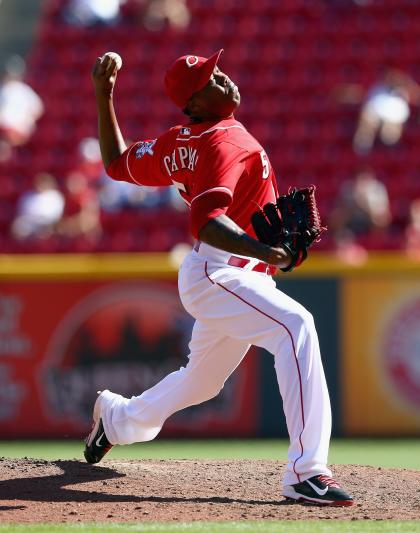Pitching by the Numbers: Closing costs

Last week I detailed my strategyof not drafting starting pitching when a top 80(ish) hitter is still on the board. Now let me make it clear, that doesn’t mean that I’m not drafting any pitchers in those rounds. I’m willing to pay the freight on certain closers.
But the closers I want are of a very specific variety that also happens to typically be the most expensive — those who dominate in strikeouts.
I hate paying retail for anything, of course. And, yes, saves are one category. But my targeted closers are not one category pitchers. Their strikeout ability not only provides a huge surplus relative to average closers but also likely reduces their ERAs and WHIPs to levels where they each take a second-tier pitcher and combine to create a first-tier hybrid totaling 270 or so innings. And of course I hope some of the “second-tier pitchers” I draft have a decent shot of ending up being first-tier, like Corey Kluber in 2014.
Drafting closers late is dangerous in Yahoo! formats that cap innings because innings limits make closers more attractive. You also run the greater risk of these cheaper closers having no positive impact on your strikeouts and averages (ERA and WHIP), and perhaps even a detrimental one. Lower-K closers also have a higher likelihood of blowing saves, given they allow batters to put more balls into play.
The other problem with waiting on closers is that you never are sure when a run is going to start. While we do generally know the order they’ll come off the board, when they come off is an entirely different matter. To be safe in attacking the category, you may have to draft even second-tier ones early or run a greater risk of being shut out.
The list of closers who can help you in four categories and thus are worthy of much higher picks is short. I note the FantasyPros ADP (which, again, can vary radically in any given draft), sorting by the difference last year between these closers’ strikeouts and innings pitched.

* - Does not currently hold the closer role for his team
I’ll take Aroldis Chapman late third or early fourth, depending on my draft slot. That is a steep price. But he’s 52 strikeouts over innings. And 52 strikeouts could easily mean a couple of points in the standings.
Delin Betances has to be adjusted for pitching probably about 20 less innings this year, given that he’s likely the Yankees closer now. That drops his expected differential down to about 30-35 more Ks than innings, which is still elite.
Kenley Jansen is a big bargain relative to Crai Kimbrel, though I have no problem drafting Kimbrel. But Robertson is the best get if these FantasyPros expert ADPs are remotely accurate. He’s dominant enough to be going in the 40s. Grab Chapman around the 40th overall pick and Robertson three rounds later and you are golden.
The one sleeper who everyone should try to draft at his ADP is Giles, just a Jonathan Papelbon trade away from closing.
I’m not going to lie, it really hurts to draft closers this early. But I think the high-K ones put us in position to compete with fellow owners who invest much more heavily in starting pitching. These other owners must go cheap closer (who, again, are probably going to be a drag in the other categories) or spend an additional two premium picks on pitchers. If they do the latter, their hitting will be too weak to beat you.

 Yahoo Sports
Yahoo Sports 
